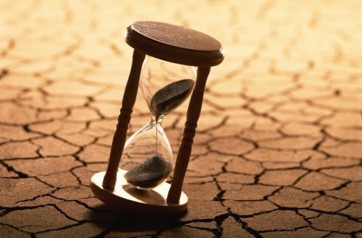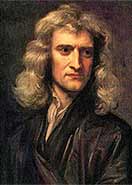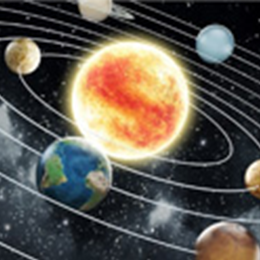We typically use the word “time” (as measured by a clock or watch) to refer to specific instants in the flow of time, or the length of time between two specific instants.
When it comes to the question “What is time?” however, things are not so simple. There are many different angles from which we can approach this theme, which vary greatly between the different fields of psychology, biology, philosophy, natural sciences, physics, cosmology, and so on. There have also been numerous different definitions and ways of thinking about time in the various different eras of history, and so it is difficult to give a sweeping, generalized explanation.
Here, over the course of three separate parts, we will approach the question “What is time?” from the respective viewpoints of five of the below fields; and attempt to summarize, in an easily understandable manner-the representative ways in which time is considered in each field:

・Time as it Flows in the Mind and Body (Biological Time)
・Changes in Religious and Philosophical Views of Time
・Newton’s “Absolute” Time (Flows Constantly Everywhere)
・Einstein’s “Relative” Time (Expands and Contracts)
・The Relationship Between Space and Time
Newton’s “Absolute” Time (Flows Constantly Everywhere)
Time Passes at a Constant Speed
Around 1656 Christiaan Huygens completed his pendulum clock. After that, as accurate mechanical clocks gained widespread popularity, the concept that time flows constantly, at a certain fixed speed began to take hold. It was the British scientist Sir Isaac Newton who firmly established this idea as common sense.
In 1687, Newton published a book called Philosophiae Naturalis Principia Mathematica (Mathematical Principles of Natural Philosophy.) In this book, he introduced the concepts that “wherever we are in the universe, all time flows unchangingly at the same pace, in the same increments, from the infinite past into the infinite future,” and that “space is uniform, and extends on into infinity.” Upon the foundation of these principles of “absolute time” and “absolute space,” Newton constructed what is known as Newtonian Mechanics, which would have a profound influence on the scientists that came after him.
Although Newton’s theories were later rejected by Albert Einstein, who said that this concept did not necessarily hold true under special circumstances (such as when an object is moving at extremely high speeds), they are the most famous in terms of establishing the concept of time scientifically, and Newton’s ideas remain predominant in modern people’s view time.
The Concept of “Absolute Time” in Newton’s Absolute Space

Newton proposed the idea that all objects are always either in a state of absolute rest (perfectly still), or in motion (falling or otherwise moving) at an absolute speed; and established the idea of “absolute space,” defined by spatial coordinates along three axes, as a basic standard for this. He then defined “absolute time” as flowing constantly at the same speed anywhere and at any time within this space, completely uninfluenced by anything else.
Newton’s idea of “absoluteness” means that both time and space are completely unrelated to the motion of objects; that they exist independently, and are simply a “container” through which objects move. Newton regarded time and space in this way in order to rationally explain his Three Laws of Motion, which are the fundamental basis for Newtonian Mechanics.
Einstein’s “Relative” Time (Expands and Contracts)
Einstein’s Theory of Special Relativity
Moving into the 19th century, the Austrian physicist Ernst Mach proposed that if all matter in the universe were to disappear then no further changes would occur, and so time itself would cease to exist. Therefore, he argued, time is not absolute, and a relative relationship exists between time and matter. This concept is referred to as “relative time.” This idea would have a significant influence on the Theory of Relativity later proposed by the German physicist Albert Einstein.
Einstein argued that, although no observable difference in time is seen when two observers pass each other at low relative speeds, as their relative speeds approach the speed of light then observable differences in time begin to appear, and so the way in which time advances is not constant at all times, but differs depending on the observer.
In other words, Einstein was saying that time exists separately for each individual observer. Einstein also linked together space and time (which until that time had been treated as separate concepts in physical theory), creating the concept of “spacetime” to produce a shocking theory which essentially stated that time and space could slow down and distort depending on the state of motion of the observer.
Why Does Time Stretch and Shrink?

To state Einstein’s theory in easily understandable terms it said that, from the point of view of someone who is stationary, the time shown by the watch of a person moving at the speed of light would be “slower” than that shown by their own watch.
Due to Einstein’s postulate that the speed of light is an unchanging constant, the speed at which light travels is the same for both a stationary observer and for someone on a spaceship travelling at the speed of light: approximately 300,000km/s. Based on this, let us say—hypothetically—that if we had two “light clocks” each with with two mirrors (on at top and bottom of each clock) and positioned one clock by the side of the stationary observer on Earth and one next to person riding on the spaceship, the time taken for light emitted from a light source at the bottom of each clock to reach the mirror at the top would be the same (1 second) for both observers. If the person riding on the spaceship measured time while on board the spaceship, a period of one second would pass by in the same way as when they were stationary. This is because the spaceship and the clock inside it are moving at the same speed, and so—by the principal of relativity—the same physical phenomena occur as when the ship is stationary.
On the other hand, if hypothetically the stationary observer on Earth were to look at the clock onboard the spaceship moving close to the speed of light from Earth, they would experience a phenomenon in which, although one second had passed on their light clock on Earth, one second would not yet have passed on the light clock onboard the spaceship, due to the spaceship having progressed a very long distance in the horizontal direction. This would prove that, from the point of view of a stationary observer, time moves more slowly for a person who is moving.
There is a concept called the Urashima Effect, which is based on the Japanese legend of Urashima Taro, a fisherman who rescues a turtle and is rewarded with a visit to the undersea palace of Ryūgū-jō. He stays at the palace for only three days, but upon returning home to his village he finds himself 300 years in the future. If we were to board a spaceship and travel into space at close to the speed of light, and then return to Earth several years later, we would return to an Earth far in the distant future, because—for observers on Earth—time flows more slowly during a near light-speed space journey than it does on Earth. This is also referred to as time dilation.
This shrinking of time which occurs as we approach the speed of light does not only affect time. Objects, and the very fabric of space itself, also shrink. When this occurs, mass and energy also increase. The addition of these additional concepts gives us Einstein’s Theory of Special Relativity.
The Theory of General Relativity (Adding the Effects of Gravity)
Going further still, adding the effects of gravity, acceleration and deceleration, Einstein eventually arrived at his theory of gravity, which is known as the Theory of General Relativity.
Stated simply, it says that gravity is also a reason for the slowing down of time. As gravity becomes weaker as we move away from the center of the Earth, although the difference is very slight, time as measured by a clock on the summit of Mt. Everest moves more slowly than it does for a clock on the ground. Also, in addition to slowing down time, gravity also curves space (and light) itself. The greater the gravitational force, the greater the curving effect will be. If gravitational forces become so great that they exceed a certain limit then the result is the creation of a black hole, a distorted region of spacetime that nothing—not even light—can escape from.
For observers onboard a spaceship at the boundary (or “event horizon”) of a black hole, with its strong gravitational forces, the ship itself and any clocks on board the ship still move at the same speed as the always do. However, for sufficiently distant observers, time slows down so much the spaceship and any clocks onboard appear to stop moving completely. The outcome of this is that the ideas of “slowness” or “fastness” in terms of the speed at which time progresses are strictly relative, arising from comparisons between two or more different locations in spacetime.
The Direction of Time’s Arrow and Increase of Entropy

When considering the flow of time from past to future, we must think carefully whether the phenomenon we are considering is time reversible (i.e. in which the direction of time can be reversed to flow from future to past) or time irreversible (i.e. where time can never be reversed). When doing so, we make use of a concept that is referred to as time’s arrow, or the arrow of time.
Some examples include the thermodynamic arrow of time, where heat flows from the warmer, high-temperature parts of an object to the cooler, low-temperature parts as time progresses; the radiative arrow of time, as seen when waves or ripples radiate outwards from the center (or source) when a stone is thrown into a pond, or when radio waves are emitted from a broadcasting station; and the evolutionary arrow of time, in the evolution of animals. All of these things will not return to their original states, and are therefore time irreversible phenomena.
In physical terms, all of these phenomena are changes in which ordered structures or states are heading towards disordered structures or states with the passage of time. We therefore say that their “entropy” (meaning the degree of disorder) is increasing. This is called the Principal of Increase of Entropy.
For example, let us imagine the game of Reversi (Othello). Imagine that initially, we have set out a full board covered completely in white discs, all placed neatly in line with the squares on the board. We then shake the board around randomly several times. The discs will move out of alignment with the squares, and many of them may flip over to reveal their black faces. It is statistically extremely improbable that the discs will return to an ordered state such as the initial state where the discs were all lined up neatly with the squares and showing their white faces. It is far more probable that shaking the board will result in a disordered state, where the discs are misaligned from the squares, and with some showing their white faces and some showing their black faces.
In this way, the Principal of Increase of Entropy is a completely natural, common sense physical concept. It describes the idea that if we prepare things in an initial state that is improbable to be realized naturally, then with the passage of time, things will naturally settle into a state that is more highly probable to arise. Accordingly, it shows that time’s arrow is a phenomenon that we can observe in the world around us, that arises as the result of the average movement of countless tiny particles.
Reference Literature
・Dōshite jikan wa nagareru no ka (Why Time Flows),Toshifumi Futamase, PHP Shoseki
・Newton Supplement: What is Time?, Newton Mook, Newton Press
・Zukai zatsugaku: Jikanron (Misc. Studies w/ Pictorial Explanations: Theories of Time), Toshifumi Futamase, Natsumesha
・Zō no jikan, nezumi no jikan (Time for Elephants and Time for Mice), Tatsuo Motokawa, Chūkō Shinsho
・Dōgen Zenji no jikanron (Dōgen Zenji’s Theory of Time), Tairyū Tsunoda, Komazawa University
・1-byō tte dare ga kimeru no? (Who Decides How The Length of 1 Second), Masami Yasuda, Chikuma Primer Shinsho
Related exhibits and artifacts




